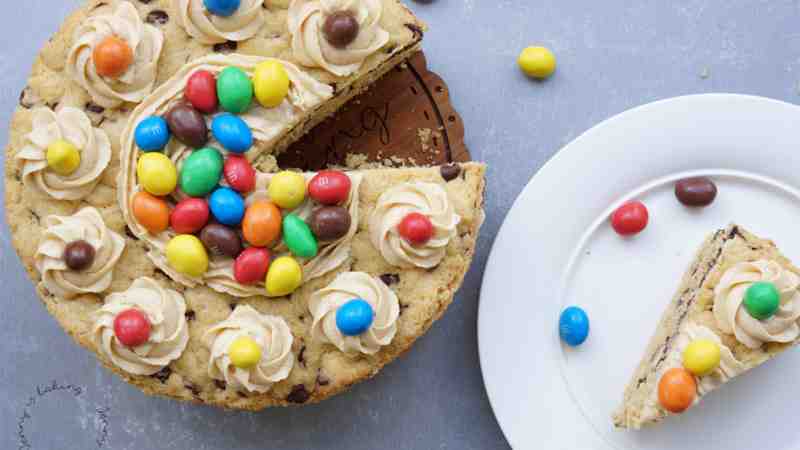Mawa Cake Recipe is a soft, white, spongy Indian dessert made from milk and cream. Mawa cake is typically made with mawa (or maida), flour that has been sifted.
The dough for the cake is mixed with oil and eggs then layered in three thin bread pans stacked on top of one another to produce an even layer in the pan.
How to make Mawa Cake Recipe
Ingredients:
- Mawa – 2 cups
- Milk – 1/2 cup
- Eggs – 3
- Sugar- 1 cup
- Butter or Ghee – 1 tablespoon
Method:
1. Mix all the ingredients in a mixing bowl, and by using a spatula, mix at low speed (we like to mix the batter with a proper dough stick).
2. Mawa cake recipe requires a lot of mixing, and at the end, you will get bread loafs each about 5 inches tall, 0.5 inches in diameter, and about 1 inch thick.
3. Remove the dough from the mixer and cut off the loaves with a very sharp knife.
4. Make 2 loaves, then put them between 2 layers of wax paper or plastic wrap to avoid drying out overnight.
5. Before baking, place 1/2 inch of butter or Ghee on top, rub it into the dough inside the pans, and then close tightly.
6. preheat the oven to 350 degrees F (175 degrees C) using a baking sheet with non-stick baking paper (or parchment paper).
7. Now, form the mawa cake dough into loaves and place them in lightly greased baking pans.
8. Bake in a preheated oven for approximately 35 minutes or until the loaf is golden brown.
9. Allow cooling for several hours at room temperature before removing it from the pan.
10. Store mawa cake in an airtight container and enjoy.
Nutrition facts of Mawa Cake Recipe
| Nutrition | Amount |
|---|---|
| Calories | 300 |
| Total Fat | 16 gm |
| Cholesterol | 65 mg |
| Fiber | Fiber |
| Carbohydrates | 27 gm |
| Protein | 5 gm |
Best 7 Health Nutrition of Mawa Cake Recipe
1. Mawa cake is a good source of protein, which helps in the growth and repair of your body tissues.

2. Mawa Cake Recipe is low in saturated fat and cholesterol and rich in dietary fiber.
3. Mawa cake contains no trans fat and is high in Vitamin A, Vitamin C, Calcium, and Iron.
4. Mawa cakes contain calcium which helps build strong bones & teeth and prevent osteoporosis by increasing the bone density in older adults.
5. Mawa cakes are a good source of fiber that helps digest foods and relieve constipation.
6. Mawa (Milk cake) is an excellent source of Vitamin B complex, folate, niacin; a good source of Vitamin C, potassium, and magnesium.
7. Mawa Cake Recipe is high in B-complex vitamins that strengthen the immune system, increase metabolism & improve circulation.
Is It Healthy?
Yes, Mawa Cake Recipe is a healthy food except for a small amount of cholesterol and saturated fat, present in all dairy products.
Is It Gluten-Free?
Yes, mawa cakes are free from gluten.
Is It Calorie-Dense?
Yes, Mawa Cake Recipe is a very calorie-dense food since it contains calories in fats and carbohydrates.
Is It Nutritious?
Yes, Mawa Cake Recipe is a very nutritious food since it contains nutrients like proteins, vitamins, and minerals required by our body.
Is It Easy to Store?
Yes, Mawa Cake Recipe is very easy to store; it can be stored in an airtight container and refrigerated but avoid freezing.
Can I Freeze It?
Yes, Mawa Cake Recipe can be frozen without thawing.
Can It Be Frozen?
Yes, mawa cakes can be frozen in an airtight container for up to a month.
Can I Eat It During Pregnancy?
Yes, Mawa Cake Recipe is safe to eat during pregnancy but in small amounts.
Is It Suitable For Pregnant Women?
Yes, mawa cakes are safe for pregnant women since they are made from milk and sugar.
Is It Good During Breastfeeding?
Yes, Mawa Cake Recipe is safe to eat during breastfeeding.
Is It Okay For Children?
Yes, mawa cakes can be given to children but in small amounts.
Is It Heavy/Weight Gaining?
No, Mawa Cake Recipe is not a weight-gaining food since it contains low fats.
Is It Good For Diabetic Patients?
Yes, Mawa Cake Recipe is safe for diabetic patients because it contains less amount of sugars.
Conclusion
Mawa Cake Recipe is a very nutritious and healthy food, and it is low in trans fat, cholesterol, and sodium. Mawa cake helps in the growth, repair, and maintenance of our body tissues by providing proteins and other nutrients.